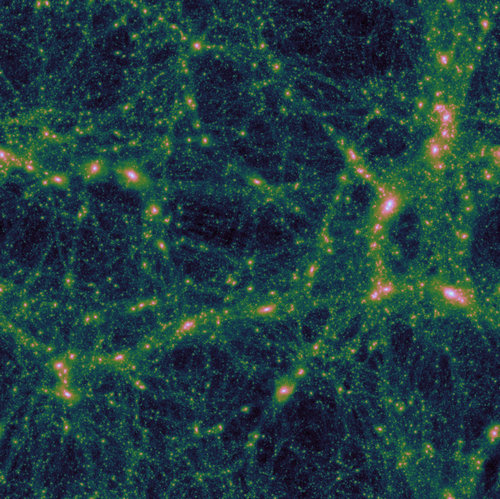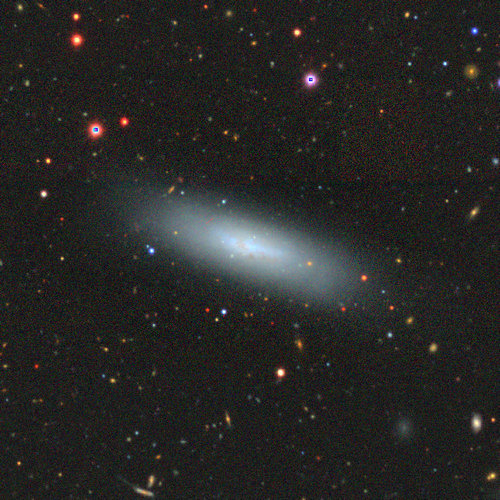An important research result discovered by a team of Chinese astronomers has been published by Nature Astronomy in the early morning of 26th, November, 2019. The researchers found a special population of dwarf galaxies that could mainly consist of baryons up to radii of tens of thousands light years, where they are expected to be dominated by dark matter. This result provides observational evidence that could challenge the formation theory of dwarf galaxies in the framework of standard cosmology and may provide new clues to the nature of dark matter. The research team is composed of researchers from the National Astronomical Observatories, Chinese Academy of Science (NAOC), Peking University and Tsinghua University.
In the standard cosmology, the Universe is dominated by cold dark matter and dark energy, while baryons only occupy 4.6%. Galaxies form and evolve in systems dominated by dark matter (Figure 1). In high-mass systems, the baryonic fraction can reach the universal value, i.e. 4.6%. In low-mass systems, the baryonic fraction can be much lower due to their shallow gravitational potential. The satellite dwarf galaxies in our Local Group are found to be dominated by dark matter down to radii of a few thousands of light years. However, statistical studies beyond the Local Group were hampered by the extreme faintness of such systems in the past.
Taking advantage of the joint catalogue of the catalogue of Arecibo Legacy Fast ALFA 40% release and the Seventh Data Release of Sloan Digital Sky Survey, the research group led by Prof. Qi Guo at NAOC found 19 dwarf galaxy candidates that are dominated by baryonic masses at radii far beyond the half optical radii (a few thousands light years). Yet the dark matter mass to baryonic mass ratio could reach 10--1000 if they were ‘typical’ dwarf galaxies. In particular, most of these baryonic dominated dwarf galaxies are isolated galaxies, free from the influence of nearby bright galaxies and high dense environments.
This result is very hard to be explained by the standard galaxy formation model in the context of concordance cosmology and thus encourage people to revisit the nature of dark matter. Instead of the standard cold dark matter model, a warm dark matter model or fuzzy dark matter model could be more in line with the formation of the particular population of dwarf galaxies. Alternatively, some extreme astrophysical processes may also be responsible. Further observations are required to understand the formation of these particularly baryonic dominated dwarf galaxies.

Figure 1. Dark matter drives the structure formation and constructs potential wells within which galaxies could form. The figure illustrates the structure in the simulated universe in a box of 200 million light years each side. It is color coded by the black, green, yellow, pink and white from low to high density regions (Credit: NAOC)

Figure 2. An example of the baryonic dominated dwarf galaxies—UGC7920 (Credit: DECaLS-DR8)
The paper can be accessed at:http://doi.org/10.1038/s41550-019-0930-9

Address: 20A Datun Road, Chaoyang District, Beijing, China code: 100012
Tel: 010-64888708 E-mail: naoc@nao.cas.cn

